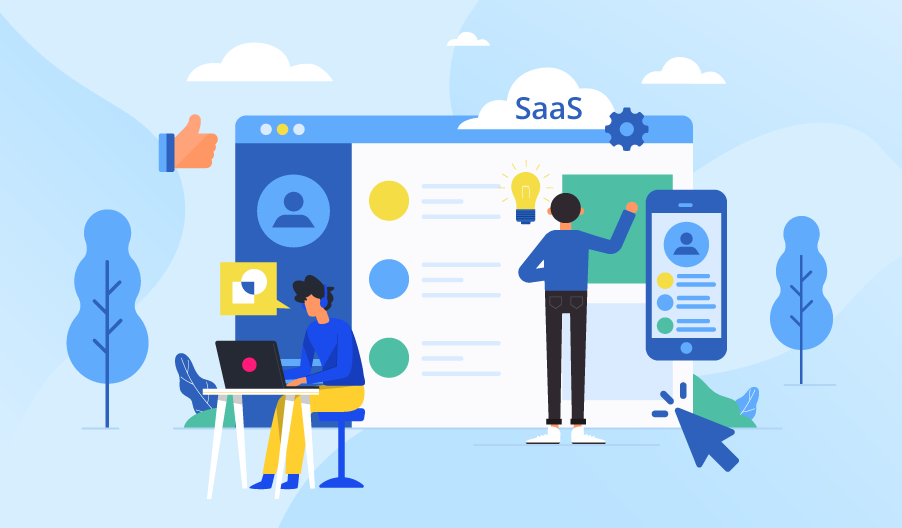Best Practices for Creating Conversion-Driven SaaS Product Design
More than 30,500 SaaS companies are competing for users’ attention today. That means every detail of UI/UX needs to be carefully crafted to make users stay and engage with your product. To help you avoid common pitfalls, we share 5 best practices in UI/UX design that, in our opinion, are vital for developing a successful SaaS product.

1. Allow fast and easy sign-up/sign-in
The more information you ask from your users, the higher the chances you will lose them before they complete the registration form. Strive to ask for as little information as possible – just an email and a password are the best way to go. Sign-in via an existing account in either Google or popular social networks is a convenient option as well.
Regardless of how feature-packed or unique your SaaS product is, your users shouldn’t be overwhelmed or puzzled by its design. Even if the essence of your software seems to go beyond the standardized menus, try to stick to what is already familiar to users and fit your ideas in a concise navigation bar with < 10 main highlights of your functionality.
Properly structuring your drop-down menu items is important too: a new visitor won’t take too much time searching for the line they need and will leave if they don’t find it right away. Take some time to user-test your menu to make sure all your drop-down items are placed exactly where other people expect to find them.
3. Consider a mobile app
Apart from thinking ‘mobile first’ when creating your responsive SaaS design, consider developing a complementing mobile app. An app often allows better performance and a more controlled UI. More importantly, it helps to improve retention since users are more likely to get back to an app than a browser bookmark. If you don’t plan to develop an app in the near future, make it possible for users to add a ‘shortcut’. It will look and behave similarly to a regular app, but no data will be installed on a user’s device.
4. Offer customization options
Even best UI/UX experts can’t create a SaaS design that will appeal to every user equally. Tastes, preferences, and physical abilities vary widely, and you should show your user base that you appreciate these differences by offering them rich customization options. Allow different font sizes and make sure your intensive colors can be dimmed. Introducing a ‘night-view’ can also be useful: Twitter polls showed that almost 50% of their user base think that dark-colored interface is easier on the eye.
5. Keep it simple
A product with good UI/UX doesn’t need any onboarding time. Steve Krug in his book on UI/UX called ‘Don’t Make Me Think’ gives an example of good and bad door design, insisting that whether a door needs to be pushed or pulled to open should be obvious from the design itself, not from the written instructions. The same applies to any software product design: your features – especially key ones – should work in a self-explanatory manner. If you feel that a certain feature needs even a short tutorial, consider redesigning this feature in a simpler way.
Takeaways
When creating UI/UX design for your SaaS product, make sure to facilitate your users’ journey as much as possible. Simple sign-up, mobile friendliness, customization options as well as intuitiveness and simplicity of your navigation and functionality – all this removes a great deal of unnecessary friction and thus helps to attract and retain customers.

